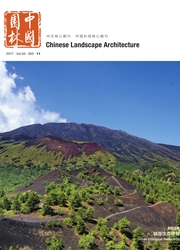

 中文摘要:
中文摘要:
以上海居住区"SVA·世博花园"为调查对象,测试居住区风景园林空间小气候要素数据,问卷调查居民小气候感受,旨在寻找风、湿、热小气候要素与居住区开敞空间布局及人群行为间的复杂关系。研究发现:1)风景园林空间朝向、绿化覆盖率及水体是影响居住区小气候的主要空间要素;2)太阳辐射与风速是影响居住区人群行为的主要小气候要素;3)遮阴是夏季人群休憩空间遴选的关键因素。研究提出了小气候适应性风景园林设计策略,包括:1)合理设置风景园林空间朝向;2)合理增加风景园林空间绿量与水体面积;3)合理设计休息设施区的遮阴空间。
 英文摘要:
英文摘要:
This research is taking "SVA- Expo Garden" as an operating space, to find the relationship between summer microclimate(thermal, wind and humidity) elements, landscape spatial layout and human activities in four typical landscape spaces(square, waterfront area, playing area and semi-outdoor activity area) of residential area. The research includes measurement of meteorological variables, interviews and observations of human activities for individuals' perception of thermal, wind and humid. Research has found out that: 1)orientation of space, green coverage and water body are the key spatial elements which affecting the microclimate in residential area; 2)solar radiation, air temperature, wind speed and wind direction are the physical component influence on people's attendance and behavior, in which, wind effects most; 3)shade is the dominical factor in people's selection of recreational place. The research presented microclimate adapted design strategies as well, which included: 1)set the orientation of landscape space with rationality; 2)reasonably increase the amount of landscape green space, moderately increase the water area; 3)reasonably design the shady facilities.
 同期刊论文项目
同期刊论文项目
 同项目期刊论文
同项目期刊论文
 期刊信息
期刊信息
